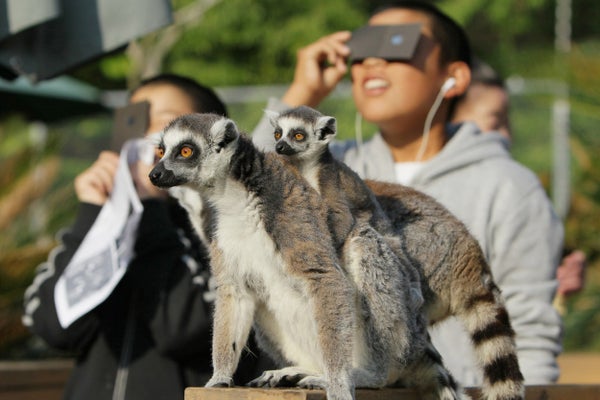How Do Animals Respond to a Total Solar Eclipse?
Scientists are finally getting their hands on enough data to begin to understand how animals react to a total solar eclipse
Ring-tailed lemurs look on as children view a solar eclipse at the Japan Monkey Center in Inuyama city in Aichi prefecture, central Japan in May 2012.
JIJI Press/AFP via Getty Images
This article is part of a special report on the total solar eclipse that will be visible from parts of the U.S., Mexico and Canada on April 8, 2024.
Adam Hartstone-Rose had unusual company during 2017’s total solar eclipse: he watched the spectacle alongside 43 Rainbow and Coconut Lorikeets, that were tucked in their enclosure at the Riverbanks Zoo in South Carolina. As the moon blocked out the sun and twilight appeared to fall in midafternoon, an awe-filled experience for many humans, Hartstone-Rose observed his feathered friends’ more mundane reactions: the birds simply assumed that night had come and, minutes later, that morning had subsequently arrived.
“They did their entire evening routine and nighttime routine and morning routine, all in the span of about four minutes,” says Hartstone-Rose, a biologist now at North Carolina State University.
On supporting science journalism
If you’re enjoying this article, consider supporting our award-winning journalism by subscribing. By purchasing a subscription you are helping to ensure the future of impactful stories about the discoveries and ideas shaping our world today.
For centuries, people have been intrigued by animals’ odd behaviors during total eclipses, when the moon’s shadow sends a strip of Earth into an untimely twilight. “There have been lots of anecdotal stories and people who have tried to collect and understand how animals respond to eclipses over many, many years,” says Rebecca Johnson, a biologist at the California Academy of Sciences. People often tell stories of birds and insects making noise or falling silent, for…
Read the full article here







